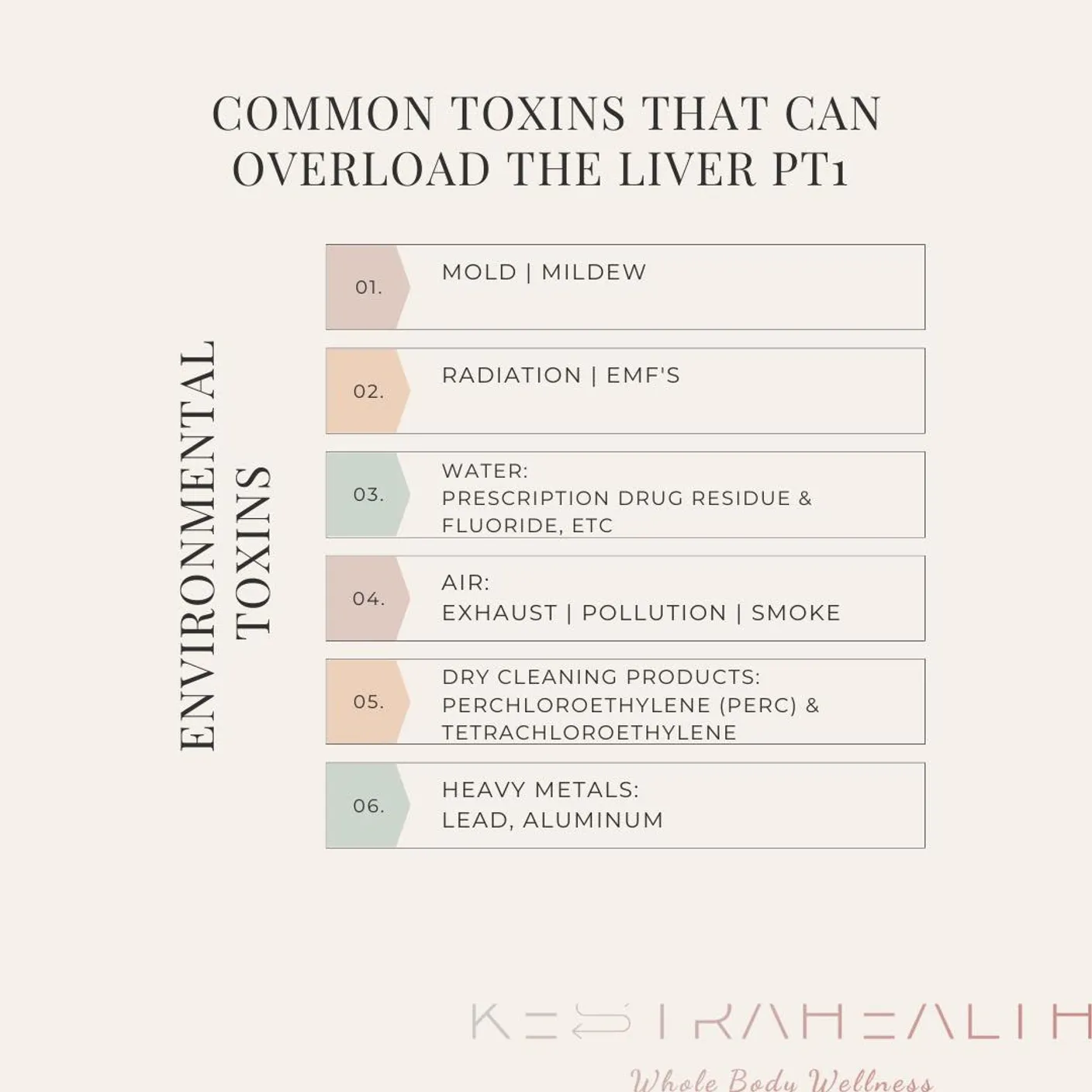The Hidden Burden (Part 1): Environmental Toxins That Can Overload Your Liver


At Kestra Health, we believe in supporting the whole body, and that includes the often-overlooked organ doing the heavy lifting behind the scenes: your liver.
Your liver is your body’s primary detox organ. It filters your blood, processes hormones, breaks down toxins, and metabolizes nutrients. But in today’s world, it’s working harder than ever. From the air we breathe to the water we drink, environmental toxins are everywhere, and they can overwhelm the liver, leading to fatigue, hormone imbalances, digestive issues, skin problems, and more.
This blog kicks off a 3-part series where we’ll explore the most common toxins your liver encounters and how to start reducing your exposure.
Environmental Toxins: The Everyday Offenders
Here are six of the most common environmental toxins that can burden your liver, many of which you’re exposed to daily, often without even realizing it:
Mold & Mildew
Found in damp areas like bathrooms, basements, or even HVAC systems. Mold spores can trigger inflammation and immune responses that weigh heavily on liver detox pathways.Radiation & EMFs
While unavoidable in modern life, electromagnetic fields (EMFs) from Wi-Fi, cell phones, and electronics may contribute to oxidative stress, adding to your liver’s detox load.Contaminated Water
Municipal water can contain trace amounts of prescription drug residue, fluoride, and other chemicals. A good water filter is a must for protecting your body.Air Pollution
Exhaust fumes, industrial pollution, and even secondhand smoke introduce volatile organic compounds (VOCs) and other airborne toxins into the bloodstream, requiring liver filtration.Dry Cleaning Chemicals
Substances like perchloroethylene (PERC) and tetrachloroethylene are neurotoxic and have been linked to liver and kidney damage.Heavy Metals: Lead & Aluminum
These can build up over time through cookware, tap water, personal care products, and even some medications. Your liver must work overtime to process and excrete them.
Why This Matters
The truth is: You don’t have to live in a toxic bubble to experience the effects of liver overload. Chronic low-level exposure adds up, and symptoms often show up subtly:
- Fatigue
- Brain fog
- Hormonal fluctuations
- Trouble sleeping
- Acne or rashes
- Sluggish digestion or bloating
If your body feels off, your liver might be waving a white flag.
What You Can Do Today
Supporting your liver doesn’t have to be complicated. Here are three simple steps you can take right now:
- Drink filtered water and avoid plastic bottles
- Ventilate your home and consider an air purifier
- Read labels, especially on dry cleaning tags and beauty products
These small changes make a big difference over time.
Coming Up Next…
In Part 2, we’ll uncover the most common sources of internal toxins—like sugar, alcohol, over-the-counter meds, and even stress, and how they silently overload your liver and detox pathways.
Then in Part 3, we’ll walk through simple, science-backed ways to support your body’s natural detoxification, including what to eat, how to supplement wisely, and what lifestyle shifts actually move the needle.
Your liver is resilient, and with the right support, so are you.
Want help reducing your toxic load? Join our next group detox program or book a free discovery call to explore 1:1 coaching for a personalized wellness plan. Let’s help your liver (and the rest of you) thrive again. 💛